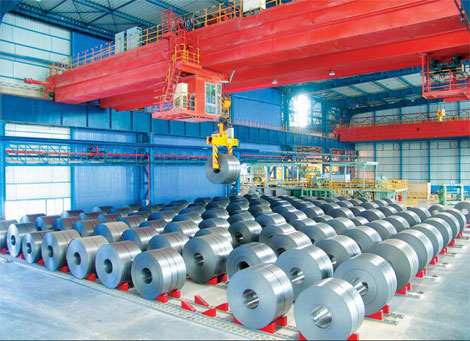
|
BIZCHINA> Center
 |
|
Related
Steel industry launches green revolution
By Yu Tianyu (China Daily)
Updated: 2008-07-21 14:02
 As China's economic lifeline, the iron and steel industry used to be a black smoke maker and blue-sky killer in the eyes of many people. In 2007, SO2 emissions by China's large and medium-sized steel and iron enterprises were estimated at 756,368 tons, down 0.51 percent year-on-year. And the discharge of industrial coal ash was 382,275 tons with a 2.79 percent decline. Otherwise, soot discharges increased 3.02 percent, totaling 156,648 tons. The Long March of environmental protection and energy efficiency for China's steel and iron enterprises is still challenging, though many in the iron and steel industry have launched a green revolution in order to improve their old image. Wuhan Iron and Steel (Group) Corp (WISCO) is one such environmental protection warrior. As China's third largest steel and iron manufacturer, WISCO used to be a major polluter in Wuhan, capital of Hubei province. Many residents complained and criticized the firm, joking that sparrows would turn black after flying over WISCO's mills. It has been difficult for WISCO, an old enterprise which was established in 1958, to rid itself of its outdated, polluting and energy consuming manufacturing model, admits Deng Qilin, president of WISCO. "But by adopting new technologies and reforming the opinions of managers and staff, we continue to drive sustainable growth and develop the new growth model, which is focused on energy conservation and environment protection," he says. Since 2001, the company has invested more than 3.25 billion yuan in improving the area's water and air quality and the treatment of solid wastes. In the past, filthy water used by WISCO was poured into Beihu Lake before being discharged into the Yangtze River. This process formed a 1.5 to 2 meter layer of wastes and heavy metals at the bottom of the lake. An old resident living near Beihu Lake, surnamed Meng, says he felt sad when the beautiful scenery was destroyed and the lake nearly became a toxic marsh after WISCO's mills ran for decades. Since 2003, the company has invested more than 200 million yuan to clean up the silt and restore the landscape. A waste water treatment plant has been built at the lakeside in order to recycle and process industrial waste water and improve water quality. The plant has a capacity of 192,000 tons of waste water a day. About 60,000 trees have also been planted along the lake, creating 200,000 sq m of shade and green land for local residents. And it is hoped that the area will become a new tourist attraction for Wuhan when the polluted water of Beihu Lake turns green again. "Although steel mill is located next to the Yangtze River, we still cannot waste any drop of water, " says Deng. With comprehensive technologies and treatment plans, WISCO is expected to realize zero discharge of wastewater by 2009, Deng adds. (For more biz stories, please visit Industries)
|